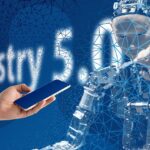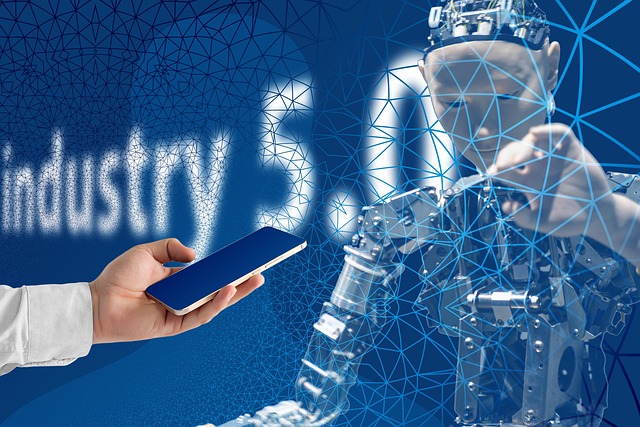# Harnessing AI Innovations: Exploring Cutting-Edge Technologies Shaping Our World Today
Artificial Intelligence (AI) has evolved from a niche academic pursuit into a cornerstone of modern technological innovation. As we navigate through the 21st century, AI’s influence permeates various sectors, revolutionizing industries and redefining our daily lives. This article delves into the latest advancements in AI, highlighting transformative technologies that are shaping our world today.
## The Rise of Machine Learning and Deep Learning
Machine learning, a subset of AI, has gained significant traction in recent years. By enabling systems to learn from data patterns without explicit programming, machine learning has revolutionized how we approach problem-solving. Algorithms that once required human intervention to identify trends are now capable of self-improvement through exposure to vast datasets.
Deep learning, a more advanced form of machine learning, employs neural networks with multiple layers to analyze complex data. This technology has driven breakthroughs in image and speech recognition, allowing machines to perform tasks that were once thought to be exclusive to human intelligence. For instance, companies like Google and Facebook utilize deep learning to enhance user experience through personalized content recommendations and improved search functionalities. The ability of deep learning models to process unstructured data, such as images and audio, has opened new avenues for innovation across various domains.
Moreover, advancements in hardware, particularly Graphics Processing Units (GPUs), have accelerated the training of deep learning models. Faster computation times enable researchers and developers to experiment with more sophisticated architectures, which, in turn, leads to more accurate and efficient AI systems. The synergy between improved algorithms and hardware capabilities continues to drive the expansion of machine learning applications in fields such as healthcare, finance, and autonomous vehicles.
## Natural Language Processing: Bridging Human-Machine Communication
Natural Language Processing (NLP) represents another significant leap in AI technology, allowing machines to understand and interpret human language. By leveraging machine learning techniques, NLP systems can analyze text, recognize sentiment, and even generate coherent responses. This capability has far-reaching implications for customer service, content creation, and accessibility.
Chatbots and virtual assistants, powered by NLP, have become integral to businesses aiming to enhance customer engagement. These AI-driven tools can handle inquiries, provide recommendations, and resolve issues in real-time, improving efficiency and customer satisfaction. The ability to communicate in natural language reduces barriers between humans and machines, fostering a more intuitive interaction model.
Furthermore, recent advancements in NLP have led to the development of sophisticated language models, such as OpenAI’s GPT-3. These models can generate human-like text, making them useful for various applications, from drafting emails to creating complex narratives. As organizations increasingly adopt these technologies, the potential for automation and innovation in content generation and language translation continues to grow.
The implications of NLP extend beyond business applications. In the realm of education, AI-driven language learning tools are transforming how students acquire new languages. These tools offer personalized learning experiences, adapting to individual progress and preferences, thereby enhancing the overall efficacy of language acquisition.
## AI in Healthcare: Transforming Patient Care and Research
In the healthcare sector, AI innovations are driving significant improvements in patient care and medical research. Predictive analytics powered by AI can identify health risks and suggest preventive measures, leading to better patient outcomes. By analyzing medical records and genetic information, AI systems can help physicians make more informed decisions tailored to individual patients.
Diagnostic tools utilizing AI algorithms are gaining traction, particularly in radiology and pathology. These systems can analyze medical images with remarkable accuracy, often surpassing human experts in identifying anomalies. For instance, AI-driven platforms can detect tumors in mammograms or classify skin lesions, providing clinicians with invaluable insights that enhance diagnostic precision.
Additionally, AI’s role in drug discovery is revolutionizing the pharmaceutical industry. Traditional methods of drug development are time-consuming and costly, often taking years to yield results. With AI, researchers can simulate interactions between compounds and biological systems, significantly accelerating the identification of potential drug candidates. This efficiency not only reduces costs but also increases the likelihood of successful outcomes in clinical trials.
The integration of AI in telemedicine further exemplifies its transformative impact on healthcare. Virtual consultations powered by AI can triage patients based on symptoms and provide immediate recommendations, ensuring timely care even in remote areas. As telehealth continues to evolve, the potential for AI to enhance accessibility and improve healthcare delivery becomes increasingly apparent.
## Conclusion: The Future of AI Innovations
As we stand on the precipice of a new technological era, the potential of AI innovations remains boundless. Machine learning, natural language processing, and AI applications in healthcare are just a few examples of how this technology is shaping our world. Each advancement not only enhances efficiency but also opens new avenues for creativity and exploration.
Looking ahead, ethical considerations surrounding AI deployment will be paramount. Ensuring that these technologies are developed and implemented responsibly is crucial for maximizing their benefits while minimizing risks. Collaboration between technologists, policymakers, and ethicists will be essential in establishing frameworks that support innovation while safeguarding societal values.
In summary, the ongoing evolution of AI technologies promises to redefine our interactions with machines and the world around us. By harnessing these innovations, we can unlock new possibilities that enhance our lives, drive economic growth, and address some of humanity’s most pressing challenges. The journey of AI is just beginning, and its transformative power will undoubtedly shape the future in ways we are only beginning to imagine.











